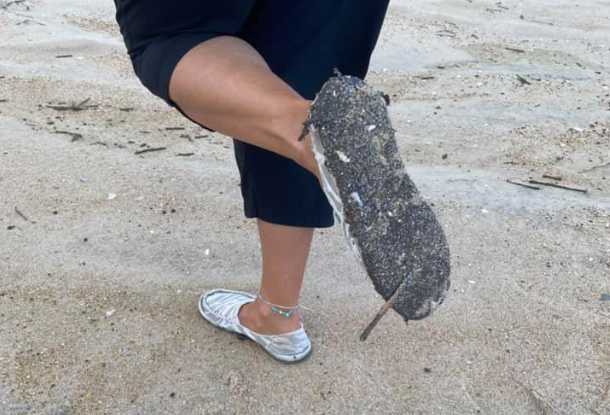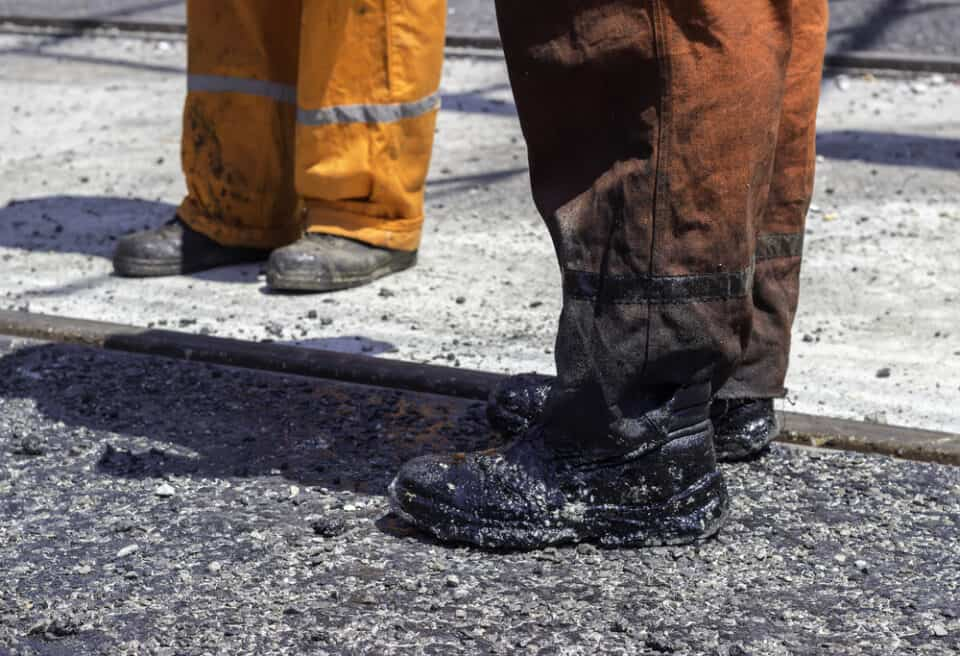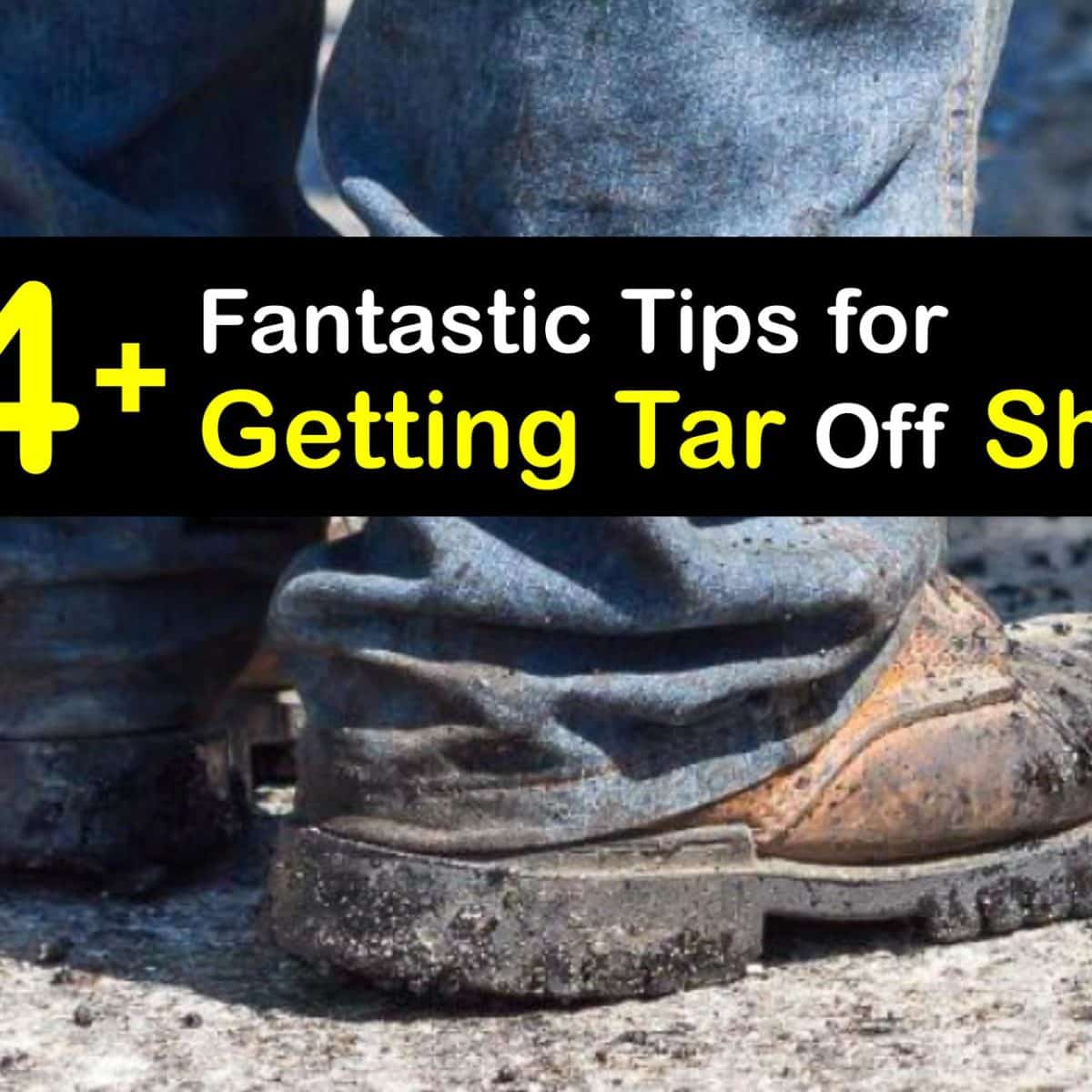Accidentally stepping on asphalt can be a nightmare for any footwear enthusiast. Whether you’re walking through a construction site, at a summer BBQ, or enjoying a casual day out, getting asphalt on your favorite shoes can be frustrating. In this article, we will explore various methods to effectively remove asphalt from shoes, share real-world experiences, provide a comparison of products, and offer tips for proper footwear care. Let’s get started!
Understanding Asphalt and Its Adhesive Properties
Before diving into removal methods, it’s crucial to understand what asphalt is. Asphalt is a sticky, black material used primarily for road construction. Its adhesive properties can make it challenging to remove from shoes and other surfaces. Asphalt consists of a mixture of sand, gravel, and bitumen—a sticky, viscous substance. This combination allows it to bond with various materials, including rubber, leather, and fabric, making removal all the more difficult.
Common Scenarios Where Asphalt Bites
Asphalt can be found in various environments. Some common scenarios where shoes might come into contact with it include:
- Walking on freshly paved roads
- Attending outdoor events near construction sites
- Working in landscaping or construction
- Casual outings in urban environments during summer

Step-by-Step Guide: How to Remove Asphalt from Shoes
1. Gather Your Cleaning Supplies
Before attempting to remove the asphalt, ensure you have the following supplies:
- Plastic scraper or a credit card
- Rubbing alcohol or nail polish remover
- Dish soap
- Warm water
- Old cloths or paper towels
- Soft-bristled brush (optional)

2. Scrape Off Excess Asphalt
Using a plastic scraper or an old credit card, gently scrape off any excess asphalt. This step is crucial as it removes the bulk of the material without grinding it further into the shoe.

3. Apply a Solvent
Once you’ve scraped off the excess, apply rubbing alcohol or nail polish remover to a cloth, and dab it onto the remaining spots of asphalt. Allow the solvent to soak in for a few minutes to break down the adhesive properties of the asphalt.

4. Wash with Soap and Water
After the solvent has had a few minutes to work, mix a small amount of dish soap in warm water. Use an old cloth or soft-bristled brush to scrub the affected area gently. The soap will help lift any remaining asphalt from the shoe.

5. Rinse and Dry
Rinse the area with clean water to remove any soap residue, then wipe dry with a clean cloth. If any asphalt remains, repeat the solvent application and scrubbing process.

6. Assess for Damage
Once the asphalt is fully removed, examine your shoes for any damage. If the shoe material feels compromised, consider using a conditioner suitable for the shoe type (e.g., leather conditioner for leather shoes).

Alternative Methods for Stubborn Asphalt Residue
1. Use of Commercial Asphalt Removers

In cases where household methods fall short, consider investing in a commercial asphalt remover. Products such as “Goof Off” or “Motsenbocker’s Lift Off” are formulated specifically for tough stains.
2. Freezing Method
For thick asphalt residues, you can place the shoes in a plastic bag and freeze them for a few hours. The cold will harden the asphalt, making it easier to scrape off.
Comparison of Popular Asphalt Removal Products
| Product | Type | Effectiveness | Price | Pros | Cons |
|---|---|---|---|---|---|
| Goof Off | Solvent | Highly Effective | $9.99 | Fast-acting, Works on various surfaces | Strong fumes, Requires ventilation |
| Motsenbocker’s Lift Off | Non-toxic | Effective | $11.99 | Eco-friendly, Easy to use | May require multiple applications |
Tips for Preventing Asphalt Stains
1. Choose the Right Footwear
Selecting shoes made from materials that resist staining, such as synthetic fabrics or treated leathers, can minimize asphalt stains. Brands like Adidas and Asics have options that are both stylish and practical for outdoor activities.
2. Look for Protective Treatments
Consider using protective sprays designed for shoes to create a barrier against stains. Products like Scotchgard can help repel asphalt and other substances.
3. Clean Regularly
Regular cleaning of your shoes will remove dirt and debris that can trap substances like asphalt, making them harder to remove later.
Real-World Case Studies: How Footwear Enthusiasts Tackle Asphalt Stains
Case Study 1: The Construction Worker
Mike, a construction worker in Texas, often finds himself dragging asphalt home on his work boots. He swears by Goof Off due to its fast-acting properties, allowing him to clean his shoes quickly before heading out. “I can’t afford to buy new work boots every time I get asphalt on them,” he says. Using the product consistently has saved him cash and extended the life of his shoes.
Case Study 2: The Weekend Gardener
Jessica, a weekend gardener from California, encountered a sticky situation when she accidentally stepped on an asphalt patch while planting flowers. With her trusty dish soap method and a little patience, she managed to rescue her favorite pair of canvas sneakers. “I never thought a simple household item could perform miracles,” she recalls.
FAQs About Removing Asphalt from Shoes
1. Can I use acetone to remove asphalt?
Yes, acetone is effective for removing asphalt; however, it should not be used on certain materials like suede or some plastics as it may damage them.
2. What if the asphalt stain is old?
For old stains, it may take a few more applications of solvent and scrubbing to fully remove the residue.
3. Is it safe to use kitchen cleaners for asphalt removal?
While some kitchen cleaners may help, it is best to use products specifically designed for stain removal to avoid potential damage to your shoes.
4. How do I prevent asphalt stains in the first place?
Wearing protective shoe covers or shoes you don’t mind staining can help prevent issues when working around asphalt or in outdoor environments.
5. What materials are hardest to clean asphalt from?
Leather and suede are particularly challenging due to their porous nature, which allows asphalt to penetrate deeply.
6. How long should I leave the solvent on the stain?
Leave the solvent on the stain for about 5 to 10 minutes to allow it to break down the asphalt.
7. Can I use a pressure washer to clean shoes with asphalt?
It’s not recommended to use a pressure washer as it can damage the shoe material. Stick to scraping and chemical methods.
Conclusion: The Key Takeaways
Removing asphalt from shoes doesn’t have to be daunting. With the right methods, products, and a bit of patience, you can restore your shoes to their former glory. Whether you are a construction worker, a weekend gardener, or an everyday enthusiast, knowing how to tackle asphalt stains can save you money and keep your footwear looking fresh. Invest in the right cleaning supplies, consider preventative measures, and share your experiences with others. Your shoes deserve the best care, and with these tips, you can give them just that!
For further reading on shoe maintenance and care, visit ShoeCare.com.